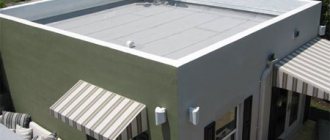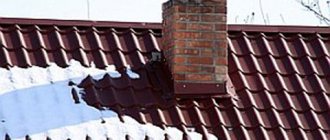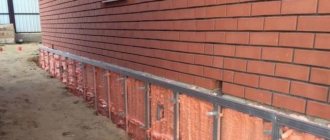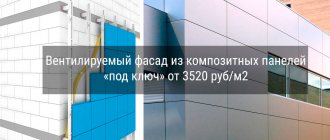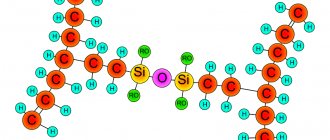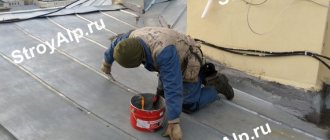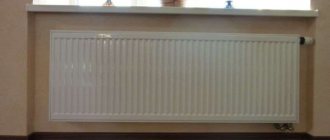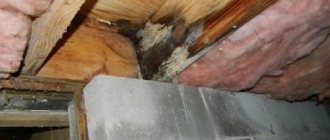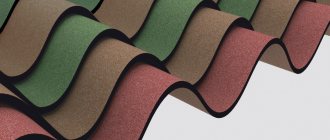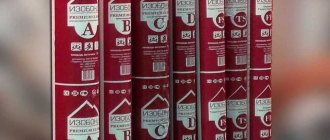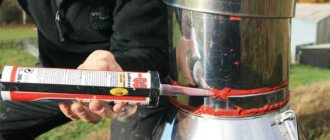In modern construction, special attention is paid to the thermal characteristics of buildings and structures. As a rule, with high-quality arrangement, you can protect a building from cold in winter, and from heat in the off-season, as a result of which you can significantly save on heating and air conditioning. When carrying out construction work, it is recommended to correctly install not only thermal insulation, but also wind protection. Wind protection for the roof is an excellent barrier to prevent cold air flows from entering the insulation, as a result of which the thermal insulation of the entire room is significantly increased.
Why do you need wind protection on the roof?
Roof wind protection is used during construction work for the following purposes:
- to hold lightweight insulation;
- to divide into several zones - cold (outside) and warm (inside);
- thanks to wind protection, the fiber of the heat-insulating material is reliably protected;
- wind protection of the roof is a barrier that prevents the influence of climatic precipitation on the building material;
- wind protection helps reduce heat losses, resulting in significant savings on heating costs.
In addition, wind protection is actively used for the following purposes:
- as a heat-insulating material for roofs, attics, attic floors;
- in the process of arranging walls and facades of buildings and structures, wind protection helps create ventilation, as a result of which the surface begins to breathe;
- as a covering for floors along joists - in this case, you can also use a film that prevents the penetration of water, but at the same time allows steam to pass through perfectly;
- waterproof film is excellent for frame partitions - it prevents the spraying of particles from the mineral wool used.
As you can see, roof wind protection has found wide application in all construction industries and is very popular.
Requirements for wind vapor barrier for a roof
The roof refers to a building element that is constantly exposed to high levels of humidity and mechanical stress. It is for this reason that hydro and wind protection for roofing must have the highest technical performance.
You can find a large number of roofing materials on the market of goods and services. If necessary, you can choose both building materials from domestic and foreign manufacturers. The insulating film may differ in technical characteristics, as a result of which the following types of wind protection can be distinguished:
- vapor-permeable - a type of material that is capable of freely transmitting steam from the insulation to the outside; these types of films are usually laid on the outer surface under the roofing;
- vapor barrier - in this case, the material must be laid on the inside, helping to protect the insulating layer from the penetration of moisture present in the air.
The most popular brand of vapor and wind insulation for roofs is Izospan. This type of roofing material is recommended for use when installing an insulated roof, the slopes of which have a slope of 35 degrees or more. If necessary, you can use wind protection with any roofing materials.
You can find class C material on sale. As a rule, this class is recommended to be used as an additional type of protection when installing an insulated roof. An excellent option is class D wind protection - a fairly dense material that is covered with a waterproof film; it can easily withstand strong gusts of wind.
As a wind barrier for an insulated pitched roof, the best option is to choose a Tyvek brand membrane. Due to its high level of strength and low weight, the film has excellent waterproofing and vapor permeability, as a result of which the roof remains dry at any time of the year.
In addition, on sale you can find wind protection for roofs, in the production process of which a microscopic mesh made of twisted polymer fibers was used. This solution prevents the penetration of moisture and air from the outside, but due to the presence of a porous structure, it does not prevent evaporation.
Attention! A moisture-proof membrane is used to protect the roof from precipitation, gusts of wind, and condensation.
Installation
You can install a wind strip on a corrugated roof with your own hands, since the installation of this shaped element does not require special construction experience or specialized tools. To do this, you will need roofing screws with a rubber seal at the rate of 5-6 pieces per plank, a screwdriver, sealant and a hacksaw for cutting. The order in which the elements are fastened depends on the installation location:
- Installation of cornice strips. On the eaves of the roof, the wind strip is installed before the roof covering, before installing the drain. It is screwed with self-tapping screws in increments of 40 cm, starting from the edge, with an overlap of 50-100 mm. During fastening, the waterproofing film that covers the sheathing is lifted and laid on top of the plank. High-quality installation means that the wind curtain element will be pressed against the inner surface of the gutter, preventing any penetration of moisture from the slope to the rafters. Sometimes this requires strips made to individual sizes.
Installation technology for cornice wind strips - Installation of the gable strip. Installation of the gable wind strip begins at the final stage of roofing work. After this operation, all that remains is to equip the roof ridge. The upper mounting flange of the plank comes in sizes 135 mm and 145 mm; it is selected depending on the profile and height of the coating waves. The element is attached from above through the roofing material to the frame sheathing and end board in increments of 30-50 cm. For this, roofing screws with a rubber or polyurethane washer are used.
Pediment strip
Installation technology for gable wind strips
Note! To additionally insulate the joints between the roofing material and the wind slats, use special sealants, silicone sealant or construction tape. According to reviews from craftsmen, the most effective is a special seal that follows the profile profile of the corrugated sheet, since it has no restrictions on its service life.
Types of wind insulation for roofs
Today you can find several types of windproof membranes on sale:
- wind and moisture protection for the roof – a distinctive feature of wind protection is a high level of vapor permeability and low water resistance;
- superdiffusion - as a rule, vapor permeability starts from 1000 g per square meter. m.
If we consider a hydro-windproof membrane for a roof in terms of efficiency, then windproof membranes, which consist of a large number of layers, should be put in first place. Thanks to the presence of the outer layer, the material is quite strong and stable. In addition, the material does not tear during strong gusts of wind, which is very important. Inner layers of wind protection promote vapor diffusion. Since some types of multilayer materials are processed using special impregnation, such building materials can be used if it is necessary to build a roof for a short period of time or as cladding on a facade.
How to choose wind protection for a roof
When choosing a windproof film for a roof, it is recommended to take into account a number of nuances. These include the following points:
- toxicity - as practice shows, windproof roof film should be made of environmentally friendly materials, and no toxic substances should be released during operation;
- technical characteristics - in this case, the level of strength, resistance to ultraviolet rays, and the permissible range of exposure to temperature conditions are of particular importance;
- service life.
In addition, many consumers take into account the cost of the product. The most expensive option is superdiffusion membranes, but they have high technical characteristics.
Installation of roof wind protection
If you plan to build a house with a pitched insulated roof, then the windproof membrane for the roof must be laid on the outside of the heat-insulating material. If necessary, the wind protection can be mounted directly on the insulation layer, while leaving a gap for the ventilation system. The installation work, as a rule, completely depends on the selected wind and moisture-proof film.
Installation work must be carried out according to the following step-by-step algorithm:
- The first step is to roll out the rolled material. In this case, the canvas used must be laid from the bottom up towards the ridge perpendicularly or the film must be laid parallel to the ridge. It is recommended to overlap each subsequent layer of moisture-proof film for roofing by 10-15 cm.
- All existing joints must be taped using a special tape; the outer rows should be attached to the roof sheathing. After the membrane is completely installed on the roof frame, it is necessary to install counter battens made of wood. Fastening should be done using self-tapping screws or nails.
- When the counterbattens are fully installed, they move on to arranging the sheathing or making a continuous flooring. These works depend entirely on what kind of material was used. It is not recommended to use nails and staples over the wind barrier membrane in areas where there are no wooden batten joints.
In this case, it is recommended to ensure in advance that there is a gap between the windproof and roofing material for the ventilation system.
Types and technical characteristics
According to building codes, when constructing a roof made of corrugated sheets or tiles, wind slats must be fastened. They are installed along the entire perimeter of the roof structure to prevent precipitation and gusts of wind from entering the rafter frame and sheathing. The following types of these shaped elements are distinguished:
- Front (end) strip. It is a corner, one of the mounting flanges of which is straight, and the other follows the wavy relief of the corrugated sheet. The gable strip is attached to the roof overhangs located on the gable side of the structure. This element, necessary to protect the rafters from moisture, covers 1-2 waves of corrugated board, and also completely covers the end board. Some models are equipped with a capinos for water drainage.
- Cornice strip. The eaves strip is mounted on the roof sheathing along the overhang before laying the roofing material and installing the drain. It is a corner made of galvanized steel with a polymer coating with straight, even fastening shelves.
- Ridge bar. To waterproof and protect the joint between the corrugated sheets at the junction of the slopes, a ridge strip is used. It can be straight, oval, rectangular. Models with a ventilation gap are also available to improve air circulation in the roofing pie.
Assortment of shaped additional elements for corrugated sheets
Wind shaped elements for corrugated sheeting have a standard length of 200 cm, however, the useful length of the planks is only 190-195 cm, since they are installed with a gap of 50-100 mm. Manufacturers produce models with dimensions of 40x60 mm and 90x150 mm.
Standard sizes of shaped additional elements
Important! Experienced roofers recommend attaching a narrow wind strip measuring 40x60 mm on flat roofs, as well as in regions with low wind load. The wide plank is suitable for pitched structures with any slope.
Tips and tricks
Often, when choosing moisture and wind protection for a roof and further installation, many developers have a question regarding which side to lay the windproof film on the insulation. If you take into account the recommendations that the manufacturer indicates in the instructions for use, you can understand exactly how to install wind protection on the roof. If these instructions are not available, then it is recommended to use the general rules, which are excellent for this building material:
- if the simplest wind protection made in one layer was chosen for the roof, then it is completely unimportant which side the material will be adjacent to the insulation - this is due to the fact that such types of material have vapor permeability on both sides;
- windproof and moisture-proof films can also be made in several layers, it is recommended to lay such material so that the water-repellent side is located on the outside, as a rule, such a surface is smooth, often the manufacturer paints it in a different shade or uses special marking symbols for recognition;
- If a superdiffusion membrane has been chosen for the roof, then it is worth taking into account the fact that such materials are distinguished by the presence of a multilayer structure, which helps to increase moisture resistance and vapor permeability - this type of building material is recommended to be laid with the marked side out.
During the construction of a house, it is worth paying special attention to the windproof layer of the roof, which will subsequently significantly improve the microclimate in the entire room. Thanks to the wide product range and price range, it is possible to purchase inexpensive, but at the same time high-quality material from domestic manufacturers or give preference to well-known imported brands of wind protection. The choice depends entirely on the budget.
Attention! Another hint that will allow you to understand exactly how to lay wind protection on the roof - the material is rolled up during the production process so that in the future it will be as convenient as possible to install it, simply by unwinding it.
Soft roofing and additional elements for it
Soft roofing is a roof covering made of fiberglass impregnated with bitumen with a modifier and covered with slate, basalt chips or copper tape. Other names are flexible tiles, flexible roofing, shingles, shingles, roofing tiles, bitumen shingles. This material is sold in the form of rectangular, square, hexagonal pieces, with shaped cuts (diamonds, scales, etc.).
To extend the service life of the roof and give a complete appearance, special additional elements must be used together with flexible tiles - ridges, valleys, snow retainers, aerators, corner strips. All details are selected according to the color of the selected roofing tile. Skates and valley carpets are made from the same material as shingles, or similar to it. It is impossible to make the remaining additional elements from a soft bitumen coating. The slats are made of roofing steel with a protective anti-corrosion and polymer coating.
The color of the strip is selected to match the selected flexible tile Source allremont59.ru
Types of roofing strips:
- eaves strip for soft roofing (drip);
- wind strip - other names: pediment, end, facade, pediment apron, wind corner;
- abutment strip for soft roofing - may not be included in the kit; instead, a valley carpet is often used.
To get the best result, it is recommended to purchase all additional elements from one manufacturer.
